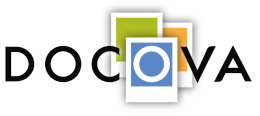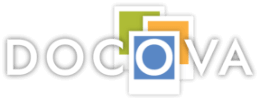Welcome to the first installment of the Migrate Notes to DOCOVA blog series. This is a multi-part series touching on what gets migrated when moving Notes applications to the DOCOVA collaboration platform. It doesn’t have to be Sharepoint. I will publish entries on a regular basis, every couple of days or so, I’m shooting for Tuesdays and Thursdays right now.
You can fast-track and get all the whitepapers on our migration methodology and everything that will be discussed in these blog posts.
The “parts” of this series are based around questions we frequently get asked about what gets migrated to DOCOVA when migrating a Notes application, so, although there will be 17 parts, if I get asked about other things that emerge as important enough to blog about, then I might add more.
If you have questions that you don’t want to drop into the comments section you can email me at john_ryan@dlitools.com.
Who am I? I’m John Ryan, I’ve been working with Notes and Domino since 1993. I am a co-owner, with Gary Walsh, of DLI.tools Inc., the company behind DOCOVA. I am the CTO here and chief architect of DOCOVA…although (tongue in cheek)…really, I’m just the guy who sets impossible goals for our exceptional development team…and somehow, they pull it off! We’ve won many awards (11 of them) over the years for DOCOVA and other software products we’ve developed.
I’m really jazzed about our new version of DOCOVA. It is version 5. In version 5 we’ve added a user workspace, a browser-based integrated development environment called App Builder and App Importer, an integrated tool you run in DOCOVA to import Notes applications into DOCOVA.
When investigating Notes application migration solutions, Notes developers should be asking the tough questions about what exactly gets migrated to the target platform and that’s what this series is about.
Lots of solutions out there talk about archiving and retiring Notes applications, or switching them over to off-the-shelf (cloud and on premises) solutions. Dig deeper and you’ll see their plan is to get your applications down to the bare minimum…and then redevelop them on the new platform, or use and modify them in some separate interface from the intended target interface.
So, why doesn’t anybody out there have a true end-to-end migration solution for Notes applications like DOCOVA? Two reasons, first, because it’s difficult. Second, because it’s difficult.
Companies don’t want to process re-engineer their Notes applications on a “new” software platform because it can’t do what Notes did. They need better. That’s why we stepped into this arena.
DOCOVA V5 was made to be very flexible and can support many of the design elements coming from Notes applications, helping to make migrations more of an “apples to apples” modernizing of your Notes applications. Trying to migrate to something like Sharepoint and Office 365 is like trying to hammer a square peg into a round hole.
Also, just for the record, I want to point out a couple of things about DOCOVA because we have had developers assume certain things about DOCOVA in the past. First of all, DOCOVA does not use XPages. Second, although you can run DOCOVA on Domino as one of the database platforms, the applications are still migrated. This means Notes applications are converted to DOCOVA applications. DOCOVA does NOT serve as a “front-end” to existing NSFs. Got it? Let’s move on.
Okay…all that said, in this first entry of the blog series, at a high level, let’s talk about what gets migrated? Subsequent blog entries will go into more detail about specific elements that get converted.
DOCOVA’s migration tool is called the App Importer and it will import the user interface (UI), business logic, security, database schema and data. Each of these is explained in more detail below.
User Interface (UI):
Most of the design elements that make up the Notes application interface like forms, views, subforms, framesets, outlines, pages and image resources are converted to the new migrated application.
Additionally, within these design elements their attributes are maintained. For example, within forms and subforms, items like fields, tables, controlled access sections and embedded views are brought over. In views, column properties like “Show multiple values as separate entries” are supported as well as sorting, categorization and totaling (except with totaling…DOCOVA views don’t have that extraneous category total. You know what I mean? Ya, that’s a good thing).
Business Logic:
Yep, the code. When a Notes application is imported into DOCOVA, all of the @formula/@Command language and LotusScript is converted to JavaScript and/or PHP. If you know about parsers and lexers and grammars…ya…that stuff.
No need to re-engineer your business processes and logic. Unless you want to.
Alright, wait a second! It’s true that there are significant differences between a Notes client and a browser client. So, yes, there are anomalies that can happen, however in our DOCOVA Analyzer tool, we identify certain things that need to be reviewed in the code to make sure it was translated properly. This speeds the QA process significantly. Best thing to do is get a demo with us. The conversion is stunning really.
Security:
Security in DOCOVA is very flexible and hence can handle the security aspects found with Notes applications. Access control lists, access types and fields like authors and readers and controlled access sections are all supported. DOCOVA can also maintain its own User Directory, but can also integrate with LDAP directory sources like Active Directory and others. Pretty convenient.
Database Schema:
So this is pretty killer. When importing a Notes application over to DOCOVA, you don’t have to first create the database layout like tables and table relationships or anything like that. DOCOVA will automatically create everything for you.
Data:
This one goes without saying, right? Of course the data has to be migrated too. All Notes document data is copied over to the new migrated application. Additionally, all attachments are brought over and things like richtext and doclinks are maintained in the new environment.
Okay…that’s enough for this installment. Stay tuned for Part 2 in this blog series where I will delve deeper into LotusScript, what gets migrated, and how we do it.
Comment below!

